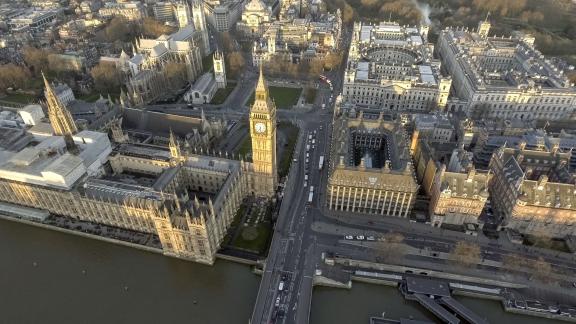How small numbers can create great problems

The current increases in hospital admissions for COVID-19 patients may seem relatively small compared to last year, but they are a logistical and safety challenge for NHS leaders. But, we can all play a part in addressing this challenge to keep staff and patients safe.
‘Freedom day’, as it is being called by some, will be anything but for many working in healthcare.
The vast majority of the existing measures in place across healthcare settings to keep patients and staff safe - such as distancing, PPE and wearing of face masks - will quite rightly remain in place. The simple government mantra of ‘hands, face, space’ is lived every day by NHS colleagues.
But with various graphs showing higher COVID-19 infections yet fewer hospital admissions, we can be led to believe that reality is rosier than it is.
Firstly, we are comparing admissions today to those experienced in January when the NHS was quite simply overwhelmed. The spring and summer months may have previously been the periods where trusts could catch up on routine elective lists, achieve strong performance across the four-hour access standard, and allow hard-working colleagues to take a break. Our members across all parts of the healthcare system are telling us that all of these areas are being compromised because of the small increase in COVID-19-positive patients.
So why are we hearing of systems in black alert levels, having to reduce elective care, or reduce the number of colleagues who take time off, all because of a handful of COVID-19 patients?
Most trusts have fairly modest-sized intensive care units, with these beds kept primarily for those who may need temporary ICU care following an elective procedure, or require intensive treatment following admission via the emergency department.
In a world without COVID-19, intensive care teams are, in my experience, among the best at adherence with good infection, prevention and control measures. But when one COVID-19-positive patient is admitted to the intensive care unit, those measures have to be stepped up a level.
That means potentially reducing the number of intensive care beds available - splitting the intensive care team into red (COVID-19 positive) and green (COVID-19 negative) areas to avoid any cross-infection between patients and staff, and taking the time to ‘don and doff’ (take on and take off) PPE. All of these things have a significant impact, and all because one COVID-19 patient has been admitted.
Equally, it has been acknowledged that the risk of nosocomial infection (hospital-acquired infection) can have catastrophic consequences for patients and a community.
One positive admission could rapidly change a ward of 24 beds available for elective patients, to zero.
With many trusts struggling with estate infrastructure, including Nightingale wards with open wards and bays, or wards with shared bathroom facilities, the admission of one COVID-19-positive patient may render the whole ward or a bay as ‘red,’ meaning that no COVID-19-negative patients can be admitted on to that ward. So one positive admission could rapidly change a ward of 24 beds available for elective patients, to zero.
Of course, hospital directors of infection control and NHS England and NHS Improvement teams will provide advice and support, but trusts will rightly proceed with caution, and would understandably prefer to avoid the risk of hospital-acquired infections, rather than focusing entirely on the elective trajectories and subsequently placing patients at risk.
Hospital-acquired infections can spread rapidly. If a patient is found to have acquired COVID-19 during their hospital stay, any other ward where the patient may have stayed and the patients that they may have shared a bay with, could also be subject to closure, testing and enhanced infection control measures.
Very quickly, trusts may then be forced to review and restrict visiting arrangements, which is isolating for patients and puts additional pressure on NHS staff, but more so puts further emotional strain on loved ones.
COVID-19 testing upon admission significantly improved during the earlier waves of the pandemic, which should in turn allow trusts to convert wards to red quite seamlessly as particular thresholds are met. However, if we consider how trusts have been focusing on the elective backlog, the closure of wards to COVID-19-negative patients means a reduced bed base in the hospital; it means reduced theatre and ITU capacity; and ultimately leads to cancellation of elective procedures at a time when there is growing pressure on the backlog.
The less tangible but important additional factor to consider is the impact on the workforce.
Communities across our four nations have done an amazing job at keeping each other safe during the pandemic, but as freedom day beckons we must remind ourselves that patients are not just numbers.
There is still a sense of anxiety that removing all restrictions will almost definitely lead to an increase in hospital admissions, including ICU, at a time when others will be travelling abroad, not wearing face masks, and, for some, choosing not to be vaccinated.
Communities across our four nations have done an amazing job at keeping each other safe during the pandemic, but as freedom day beckons we must remind ourselves that patients are not just numbers. Never should we tolerate that ‘only’ 300 people died today. That’s 300 families who have an empty chair around the table; 300 families who are grieving the loss of a loved one, and 300 families who will not want anyone to go through the pain.
So, yes, we may see small increases in hospital cases currently, but they are a real logistical and safety challenge for NHS leaders. We can all play our part. Hands, Face, Space.
James Devine is programme director for acute care at the NHS Confederation.



